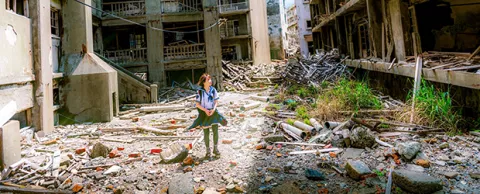
In a natural disaster, your roads and bridges are critical lifelines. And they may be at greater risk than they ever have been before.
The climate is changing, our storms may be changing too. Some models suggest that severe storms may become even more intense, requiring our infrastructure to withstand much more.
As you’ll read below, some leading cities are hiring resilience officers to try to figure out how to make their infrastructure more resilient. But if you aren’t looking at the building materials themselves, you’re missing out. — Jesse Berst
By Tim Lacey, Dow Building Solutions
City planners universally agree that planning for disasters has become more important than ever. Some cities, like San Francisco, are even naming Chief Resilience Officers.
Hard assets – buildings, bridges, roads – are the most important elements in a resiliency plan. From the very first molecule, these assets must be designed with disaster performance in mind. If this foundation is solid, city planners can develop the processes and monitoring systems that keep citizens as safe as possible.
The World Bank says the following: "Given the close interactions between climate change and local drivers of vulnerability, it is important to ultimately strengthen all aspects of climate and disaster resilient development, including coordinating institutions, risk identification and reduction, preparedness, financial and social protection, and resilient reconstruction." In this article, we are going to talk about the last topic, resilient construction.
To optimize infrastructure resiliency, planners and contractors should look at the entire system, of course, but also examine key building blocks of the system in detail. Improving the materials of certain elements – like critical buildings and roads - can yield performance for the entire city infrastructure that is greater than the sum of its parts.
Much has changed in the labs of materials scientists which can have significant impact on the ability of these “key building blocks” to better withstand catastrophic events.
For example:
- Metal infrastructure like bridges and building frames can be longer-lasting (and greener) by coating the structure in acrylic resins. Advances in acrylic latex design and formation can provide the secret sauce: a “water-borne coating” which uses water as a solvent to disperse a resin solution. This resin technology offers durability and corrosion resistance without sacrificing a building’s sustainability and performance.
- Rooftops can avoid water damage from extreme weather if building managers seal the surface with acrylic binders. The latest polyurethane materials vastly improve rooftop performance under ponded water – or water that remains on a roof for 48 hours or longer. This allows for better storm water management.
- Walls can last longer and keep the temperature right when they are constructed as an air- tight, highly insulated system. The latest thinking around insulation, air sealing and weatherization centers on an integrated “building envelope,” that can keep moisture out and air comfortable.
By looking at these key building blocks as critical places to get materials "right," cities can magnify the impact of their efforts to mitigate disasters.
Tim Lacey is global business director for Dow Building Solutions at the Dow Chemical Company, a member of the Dow Jones Sustainability World Index.
Smart Cities Council Readiness Challenge Grant
Would you like some help to make your city more resilient? The Smart Cities Council will award five American cities Readiness Challenge Grants to make better use of technology to better serve their citizens. It’s part of a White House commitment to help cities use technology more effectively. Start your application today.



